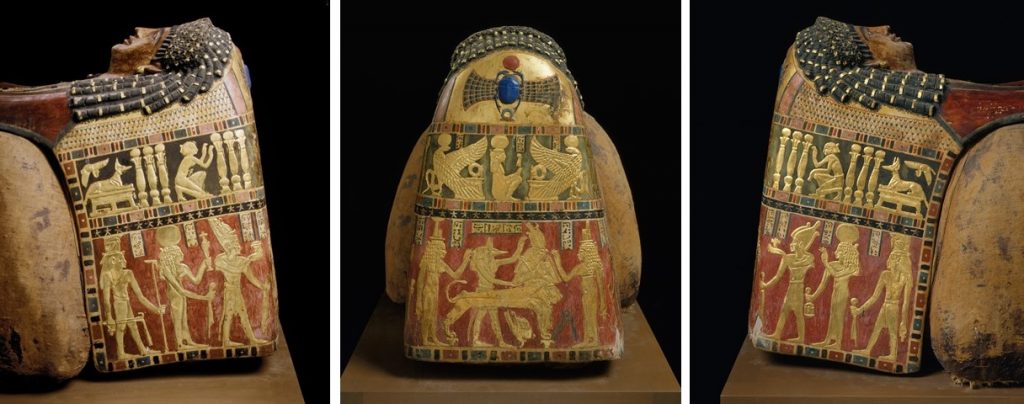Recently we posted about the decoration on the upper register of the funerary mask of Artemidora.
In it, we could differentiate two main elements: to the mourning ritual (related to the osirian legend) at both ends of the scene and the solar resurrection in the center.
Lower Register.
This part of the funerary mask present also a very interesting iconography.
The colour of the background.
One of the first things that attracts attention is the colour of the background: red; in contrast with the black one of the upper register.
The black colour in ancient Egyptian art was related to the death and the world of the dead; for that reason it was connected with Osiris and the Underworld.

The red colour was, among other things, related to the sun, star that is reborn every day. That gave it positive connotations and made it a colour of regeneration.
Therefore, in both cases we are always in this sphere of death and resurrection.
An Ennead on the lower register?
As it happened in the upper register, there is a central image flanked by three deities at left and right. With it, the Egyptian artist followed one of the main principles of Egyptian art: symmetry.
The central image is the common scene of osirian resurrection. The resurrecting corpse, being attended by Anubis, is flanked by Isis and Nephthys. These two goddesses helped in the dead’s regeneration through their mourning ritual.
On both sides three divinities witness the rebirth of the deceased in his funeral bed. We can identify some of them as Geb, Shu or Nut…maybe the intention was to reproduce a kind of Ennead, so the whole composition is made of nine gods (Anubis was not part of the Ennead of Heliopolis).

In any case, the red background and a supposed Enneada refer us to a context of solar resurrection. And the central image refers us to the osirian legend.
Summing up, the decoration of the funerary mask of Artemidora is a combination of osirian elements (black colour, mourning ritual, Anubis) and solar allusions (red colour, two cobras, Khepri over a golden background, Ennead (?)). And all of them to assure the rebirth of Artemidora.
In the next post we will analyze the logic of decoration on Artemidora’s mummy.